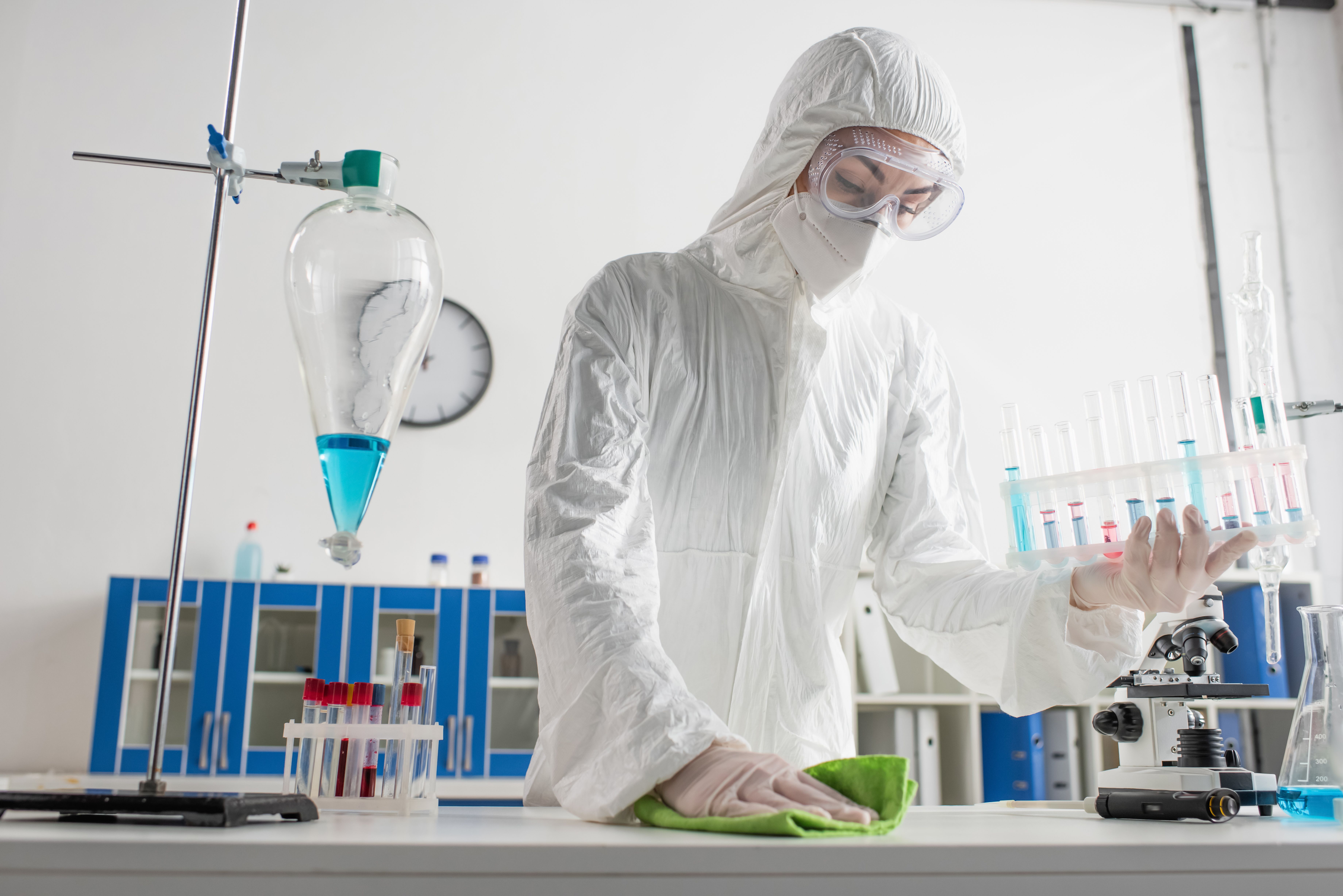Pittcon 2024: Identifying PFAS in Anti-Fog Products Using GC-TOFMS
On February 25, at Pittcon 2024 in San Diego, California, David Alonso of LECO Corporation led a workshop about how gas chromatography–time-of-flight mass spectrometry (GC-TOFMS) can be used to identify polyfluorinated alkyl chemicals (PFAS) chemicals in anti-fog product solutions.
doctor in protective suit holding test tubes while wiping desk in laboratory. | Image Credit: © LIGHTFIELD STUDIOS - stock.adobe.com

Goggles and safety glasses are prone to fogging when working in the laboratory, especially when combined with protective masks. To combat this, scientists have been using have been using eyewear with anti-fog properties, as well as anti-fog sprays and clothes to improve visibility. However, according to recent studies, these sprays and cloths run the risk of containing high levels of PFAS and other dangerous chemicals, some of which are linked to diseases like cancer. As such, anti-fog solutions must be properly characterized to identify the presence of dangerous chemicals.
A recent study by David Alonso of LECO Corporation was done to characterize anti-fog solution compounds using GC-TOFMS. This proved notable, since according to the scientists, most anti-fog constituents are not listed in commercially available mass spectral databases. To identify unknowns, enhanced chromatography and high-resolution time-of-flight mass spectrometry (GCxGC-HRTOFMS) were used. GCxGC-HRTOFMS allowed enhanced chromatographic resolution and helped them determine chemical formulas using accurate mass measurements for different ions. Combined with the high selectivity and accurate measurements of HR-TOFMS, these approaches to chromatographic resolution can lead to accurate and effective anti-fog component annotation.
Reference
(1) Identifying PFAS Chemicals in Consumer Anti-fog Product Solutions Using GC-TOFMS. Pittcon and The Pittsburgh Conference on Analytical Chemistry and Applied Spectroscopy, Inc. 2024. https://labscievents.pittcon.org/event/pittcon-2024/planning/UGxhbm5pbmdfMTc0OTM1NA== (accessed 2024-2-20)
New Method Explored for the Detection of CECs in Crops Irrigated with Contaminated Water
April 30th 2025This new study presents a validated QuEChERS–LC-MS/MS method for detecting eight persistent, mobile, and toxic substances in escarole, tomatoes, and tomato leaves irrigated with contaminated water.
University of Tasmania Researchers Explore Haloacetic Acid Determiniation in Water with capLC–MS
April 29th 2025Haloacetic acid detection has become important when analyzing drinking and swimming pool water. University of Tasmania researchers have begun applying capillary liquid chromatography as a means of detecting these substances.
Prioritizing Non-Target Screening in LC–HRMS Environmental Sample Analysis
April 28th 2025When analyzing samples using liquid chromatography–high-resolution mass spectrometry, there are various ways the processes can be improved. Researchers created new methods for prioritizing these strategies.

.png&w=3840&q=75)

.png&w=3840&q=75)



.png&w=3840&q=75)



.png&w=3840&q=75)



